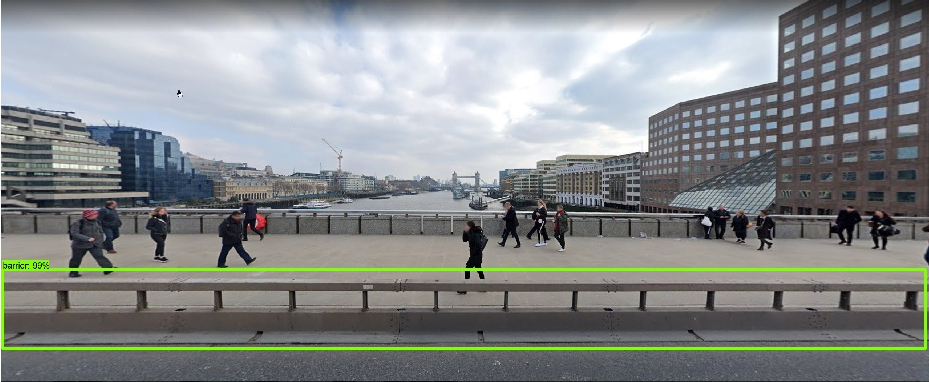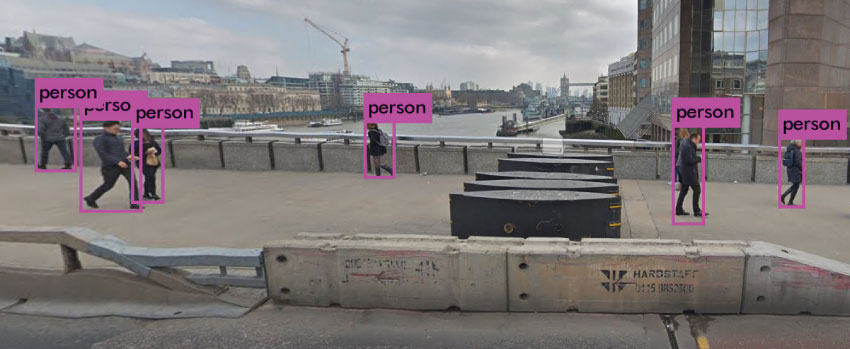Past terrorist attacks – including the London tube and bus attacks in 2007 and the Brussels airport and metro bombings in 2016 – have meant that terrorism modelling has been heavily focused on understanding the losses that may arise from attacks involving improvised explosive devices (IEDs). In response, computational fluid dynamic (CFD) approaches – that combine detailed knowledge of blast wave dynamics with 3D building and street data – have become increasingly sophisticated to accurately capture the financial losses from a range of bomb sizes.
However, in recent years a shift has occurred to a new terrorism paradigm of lower severity but higher frequency modus operandi. Specifically, as security forces have tightened around the formation of groups and their ability to construct IEDs, terrorists have found it easier and more effective to conduct marauding attacks. Methods include vehicular, bladed instrument and gun attacks.
Parallel to this shift in attack type is the requirement for re/insurers to update their modelling approaches. By developing methods to accurately capture the risk of marauding attacks, analyses can be improved and market capacity increased.
Behind the scenes: developing a marauding attack model
Although modelling terrorist attacks seems challenging at an individual level, patterns begin to emerge when seen from a macro viewpoint. Data scientists at Aon have been exploring how to capture these patterns to better understand the risks associated with marauding attacks. This approach follows a history of modelling man-made risks, such as the development of blast models, to accurately capture pressure waves from the detonation of explosives. The difference in marauding attacks is the focus on the human nature rather than the well-defined rules of physics which govern the environment.
Therefore, as Aon develops a new modelling platform for marauding attacks, a blend of a mathematical framework involving machine learning techniques, together with the latest social science research, is used to capture the various facets. The platform relies on three core components which combine to provide automated results:
1.Mapping the streets of key cities
The initial component of the platform is a street network extraction. To fully understand the risk of a marauding attack to a city it was essential to have a machine-readable map on which models can be run. The modeller can define the geographic scale they wish to analyse from a single street level to a city-wide view – anywhere in the world. With this extraction tool, it is possible to analyse some 27,000,000 miles of road network.
2.Using machine learning to identify preventative measures
Some types of marauding attacks, such as vehicular, can be restricted via the implementation of security barriers. For example, following the London Bridge attack in 2017 security barriers were erected adjacent to the pavement to repel similar terrorist attempts in the future. On a single street these preventative measures are manually researched.
However, on a city-wide or multi-road scale manually searching for all security measures can be time consuming and impractical. To overcome the limitations of manual analysis, machine learning techniques are used to teach a computer model how to automatically identify features of interest. It works by presenting examples of images alongside descriptions of the objects they contain and training the model to distinguish those objects independently in unseen images. This helps produce an effective way of identifying risk factors. Specifically, the learned model can automatically scan a range of street view imagery and identify numerous security features which can influence the risks at different locations. Currently the model can identify 91 objects within the images – such as the street barriers in London as seen in the picture below.
 Example of automated barrier detection on London Bridge
Example of automated barrier detection on London Bridge
In addition to detecting physical structures the computer vision component of the platform can also capture human risk. In the picture below, the model recognises the number of people in an image.
 Example of automated person detection on London Bridge
Example of automated person detection on London Bridge
Using the tool to obtain the distribution of people across a city can assist in producing a heat map of possible terrorist targets. Moreover, a measure of geographic risk can be automatically obtained by combining the people density with areas of low security protection.
Having isolated the geographic area of interest in the first component of the model, and automatically assigning the risks of a marauding attack in the second the final component considers event occurrence.
3.Simulating what an attack may look like and estimating losses
By translating the latest social science research on terrorism targeting and crowd behaviours, Aon’s data scientists developed a model of how attacks are likely to occur. Within this model the movements of the attacker and its targets are captured using a set of equations which communicate the relative positions of the actors involved in an event. By evolving this model forwards in time, these positions determine a range of possible outcomes from an attack.
The model currently incorporates eight driving factors to determine the interactions between the actors involved in an attack, covering terrorist-pedestrian targeting, avoidance of obstacles in the physical environment, and human psychological traits such as herd behaviour where people head in the same direction as a crowd. From the simulation outcomes it is possible to generate stochastic event sets of likely marauding attack scenarios.
Pedestrian factors captured in the model:
- Pedestrian repulsion from the attacker
- Pedestrian attraction towards exits
- Pedestrian obstacle avoidance
- Pedestrian-pedestrian proximal avoidance
- Pedestrian herd mentality
Terrorist factors captured in the model
- Terrorist obstacle avoidance
- Terrorist-terrorist proximal avoidance
- Terrorist attraction to closest pedestrian
This simulation component of the model also generates loss statistics so that the consequences from a re/insurance perspective can be obtained. Currently the model outcomes being considered are business interruption, loss of life and injury.
From modelling to mitigation
In conclusion, the attack methodology of terrorists has shifted to the utilisation of lower technology weaponry over recent years. For the re/insurance industry to keep pace with the evolving nature of the terrorism threat landscape, new models must be produced. Machine learning, mathematical modelling techniques and social science research are all part of an insurer’s armoury to help improve the industry’s understanding of marauding terrorism attacks and mitigate the potential losses.
About the Author
Dr Stephen Tench works within the Catastrophe Modelling team at Aon, leading terrorism R&D. Before joining Aon, Stephen was a PhD candidate at University College London (UCL) where his research focused on applying mathematical techniques to study temporal and spatial dynamics of terrorist attacks.
Aon UK Ltd is authorised and regulated by the Financial Conduct Authority. The Financial Conduct Authority does not regulate Aon for Thought Leadership articles. FP#12958